Moon Lace Sweater |
||||||||||||||||||||||
 |
 |
|||||||||||||||||||||
Crocheted sweater in DROPS Belle. The piece is worked bottom up with lace pattern and wide, sewn-in sleeves. Sizes S - XXXL.
DROPS 249-31 |
||||||||||||||||||||||
|
------------------------------------------------------- EXPLANATIONS FOR THE PATTERN: ------------------------------------------------------- CHAIN STITCH: If you work outermost on the hook the chain stitch will often be too tight; 1 chain stitch should be as long as 1 single/double crochet is wide. PATTERN: All diagrams show all rows in the pattern seen from the right side. Remember diagrams are read from left to right when working from the wrong side. See diagrams A.1 to A.8. CROCHET INFORMATION (mid-under sleeves): At the beginning of each round, work 3 chain stitches (equivalent to 1 double crochet), finish the round with 1 slip stitch in the 3rd chain stitch. When working the body and sleeves in the round, turn after each round, working alternately from the right and wrong side. ------------------------------------------------------- START THE PIECE HERE: ------------------------------------------------------- SWEATER - SHORT OVERVIEW OF THE PIECE: The piece is worked in the round, bottom up as far as the armholes, divided for the front and back pieces which are then finished separately, back and forth. The sleeves are worked in the round, bottom up as far as the sleeve cap, which is finished back and forth. The pieces are crocheted together. An edge is worked around the neckline to finish. BODY: Work 180-204-204-228-252-276 CHAIN STITCHES – read description above, with hook size 3.5 MM = US E/4 and DROPS Belle. Form them into a ring with 1 slip stitch in the first chain stitch worked. Work in the round as follows: 1 chain stitch (= 1 single crochet), 1 single crochet in every chain stitch, finish with 1 slip stitch in the first chain stitch = 180-204-204-228-252-276 single crochets. Now work PATTERN – read description above as follows: Work A.1, A.2 a total of 29-33-33-37-41-45 times, A.3 and finish with 1 slip stitch in the 3rd chain stitch at the beginning of the round. There are 180-204-204-228-252-276 stitches (30-34-34-38-42-46 double-crochet groups with 3 chain stitches between each group – read CROCHET INFORMATION, turn. Continue this pattern in the round, alternately from the right and wrong side. REMEMBER THE CROCHET GAUGE! When the piece measures 24-25-25-27-28-28 cm = 9½"-9¾"-9¾"-10⅝"-11"-11" – with the last round from the wrong side, divide for the front and back pieces and finish each piece separately, back and forth. Cut the strand. BACK PIECE: Skip the first 7-7-7-7-13-13 stitches on the round, work 1 slip stitch around the chain stitch in the next double-crochet group (i.e., in the 2nd-2nd-2nd-2nd-3rd-3rd double-crochet group on the round) and continue as follows: ROW 1 (= right side): Work A.4 in the same double-crochet group, A.2 a total of 11-13-13-15-15-17 times, A.5, turn = 75-87-87-99-99-111 stitches. ROW 2 (= wrong side): Work A.5, A.2 a total of 11-13-13-15-15-17 times, A.4, turn. Repeat ROWS 1 and 2 back and forth until the piece measures 39-41-43-45-47-49 cm = 15¼"-16⅛"-17"-17¾"-18½"-19¼" and the next row is from the right side. Now work the shoulder. RIGHT BACK SHOULDER (when garment is worn): ROW 1 (= right side): Work A.4, A.2 a total of 2-3-3-4-4-5 times, A.3, A.6 in first double crochet from the next double-crochet group, turn = 19-25-25-31-31-37 stitches. ROW 2 (= wrong side): Work A.6, A.3, A.2 a total of 2-3-3-4-4-5 times, A.4, turn. ROW 3 (= right side): Work A.4, A.2 a total of 2-3-3-4-4-5 times, A.3, A.6, turn. Repeat ROWS 2 and 3 back and forth until the piece measures 42-44-46-48-50-52 cm = 16½"-17¼"-18"-19"-19¾"-20½". Cut and fasten the strand. LEFT BACK SHOULDER (when garment is worn): Skip the rest of the double-crochet group A.6 was worked in, skip 5 repeats of A.2 and 1 repeat of A.3, skip the first double crochet and chain stitch in the next double-crochet group (a total of 37 stitches skipped = back of neck), work 1 slip stitch in the last double in the double-crochet group, continue as follows: ROW 1 (= right side): Work A.6, A.2 a total of 2-3-3-4-4-5 times, A.5. ROW 2 (= wrong side): Work A.5, A.2 a total of 2-3-3-4-4-5 times, A.6, turn. Repeat ROWS 1and 2 back and forth until the piece measures 42-44-46-48-50-52 cm = 16½"-17¼"-18"-19"-19¾"-20½". Cut and fasten the strand. FRONT PIECE: Start from the right side after the back piece, skip the first 15-15-15-15-27-27 stitches, work 1 slip stitch around the chain stitch in the next double-crochet group (i.e., in the 3rd-3rd-3rd-3rd-5th-5th double-crochet group after the back piece) and continue as follows: ROW 1 (= right side): Work A.4 in the same double-crochet group, A.2 a total of 11-13-13-15-15-17 times, A.5, turn = 75-87-87-99-99-111 stitches. ROW 2 (= wrong side): Work A.5, A.2 a total of 11-13-13-15-15-17 times, A.4, turn. Repeat ROWS 1 and 2 back and forth until the piece measures 35-37-37-39-39-41 cm = 13¾"-14½"-14½"-15¼"-15¼"-16⅛", with the next row from the right side. Now work the shoulders and neckline. LEFT FRONT SHOULDER (when garment is worn): ROW 1 (= right side): Work A.4, A.2 a total of 1-2-2-3-3-4 times, A.7, turn. ROW 2 (= wrong side): Work A.7, A.2 a total of 1-2-2-3-3-4 times, A.4, turn. Repeat ROWS 1 and 2 one more time (= 4 rows worked), A.7 is now finished in height. Continue as follows: ROW 5 (= right side): Work A.4, A.2 a total of 2-3-3-4-4-5 times, A.3, A.6, turn. ROW 6 (= wrong side): Work A.6, A.3, A.2 a total of 2-3-3-4-4-5 times, A.4, turn. Repeat ROWS 5 and 6 back and forth until the piece measures 42-44-46-48-50-52 cm = 16½"-17¼"-18"-19"-19¾"-20½". Cut and fasten the strand. RIGHT FRONT SHOULDER (when garment is worn): Skip the rest of the double-crochet group A.6 was worked in on the left front shoulder (= 2 stitches), skip 5 repeats of A.2, 1 repeat of A.3 and skip the first double crochet and chain stitch in the next double-crochet group (37 skipped stitches = front neckline), work 1 slip stitch in the last double crochet in the double-crochet group and continue as follows: ROW 1 (= right side): Work A.8, A.2 a total of 1-2-2-3-3-4 times, A.5, turn. ROW 2 (= wrong side): Work A.5, A.2 a total of 1-2-2-3-3-4 times, A.8, turn. Repeat ROWS 1 and 2 one more time (= 4 rows worked), A.8 is now finished in height. Continue as follows: ROW 5 (= right side): Work A.6 (start on row 2 in diagram), A.2 a total of 2-3-3-4-4-5 times, A.5, turn. ROW 6 (= wrong side): Work A.5, A.2 a total of 2-3-3-4-4-5 times, A.6, turn. Repeat ROWS 5 and 6 back and forth until the piece measures 42-44-46-48-50-52 cm = 16½"-17¼"-18"-19"-19¾"-20½". Cut and fasten the strand. SLEEVES: Work 70-76-82-82-88-94 chain stitches with hook size 3.5 MM = US E/4 and form them into a ring with 1 slip stitch in the first chain stitch worked. Work in the round as follows: 1 chain stitch (= 1 single crochet), 1 single crochet in each chain stitch, finish with1 slip stitch in the first chain stitch = 70-76-82-82-88-94 single crochets. Now work pattern as follows, read CROCHET INFORMATION: Work 3 chain stitches, A.2 11-12-12-13-14-15 times, A.3 and finish with 1 slip stitch in the 3rd chain stitch at the beginning of the round, turn. Continue like this in the round, alternately from the right and wrong side until the sleeve measures 51-49-50-48-46-44 cm = 20"-19¼"-19¾"-19"-18"-17¼", with the last round worked from the right side and, on the last round, working 1 double crochet in the stitch before the 3 chain stitches at the beginning of the round, so there are 2 double crochets (1 double crochet + 3 chain stitches) mid-under sleeve, turn. Now continue back and forth: ROW 1 (= wrong side): Work A.6, A.3, A.2 a total of 11-12-13-13-14-15 times, work 1 double crochet in the last stitch = 71-77-77-83-89-95 stitches, turn. ROW 2 (= right side): Work A.6, A.2 a total of 11-12-13-13-14-15 times, A.3, A.6, turn. ROW 3 (= wrong side): Work A.6, A.3, A.2 a total of 11-12-13-13-14-15 times, A.6, turn. Repeat ROWS 2 and 3 back and forth until the sleeve measures 55-53-54-52-53-51 cm = 21⅝"-21"-21¼"-20½"-21"-20". Cut and fasten the strand. ASSEMBLY: Crochet the shoulder seams together as follows: 1 single crochet in the outermost stitch (through both layers), 1 chain stitch, 1 single crochet around the chain-space on the front piece, 1 chain stitch, 1 single crochet around the chain-space on the back piece, 1 chain stitch, 1 single crochet around the chain stitch in the double-crochet group on the front piece, 1 chain stitch, 1 single crochet around the chain stitch in the double-crochet group on the back piece, continue like this, crocheting alternately on the front and back piece until the shoulder seam is finished. Work the other shoulder seam in the same way. Crochet the sleeve cap to the armhole in the same way (a to A – see sketch). Then crochet together the bottom of the armhole (b to B). NECK: Start on one shoulder seam and work an edge around the neckline as follows: ROUND 1: Work 1 slip stitch in the shoulder seam, * 3 chain stitches, 1 single crochet around the first/next chain-space/row *, work from *-* to end of round, finish with 3 chain stitches and 1 slip stitch in the slip stitch at the beginning of the round. ROUND 2: Work 3 chain stitches (replace first double crochet), 3 double crochets around each chain-space, finish with 1 slip stitch in the 3rd chain stitch at the beginning of the round. Cut and fasten the strand. |
||||||||||||||||||||||
Diagram explanations |
||||||||||||||||||||||
|
||||||||||||||||||||||

|
||||||||||||||||||||||

|
||||||||||||||||||||||

|
||||||||||||||||||||||

|
||||||||||||||||||||||
|
Have you made this or any other of our designs? Tag your pictures in social media with #dropsdesign so we can see them! Do you need help with this pattern?You'll find tutorial videos, a Comments/Questions area and more by visiting the pattern on garnstudio.com. © 1982-2024 DROPS Design A/S. We reserve all rights. This document, including all its sub-sections, has copyrights. Read more about what you can do with our patterns at the bottom of each pattern on our site. |
||||||||||||||||||||||











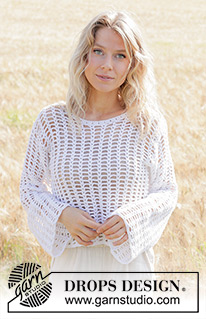





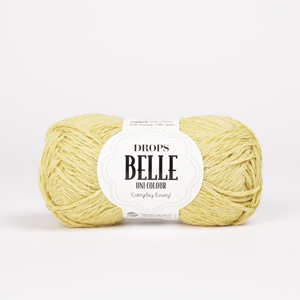











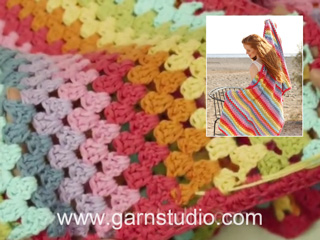


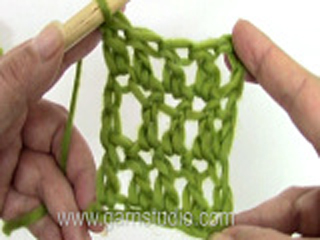
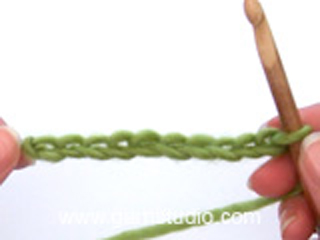

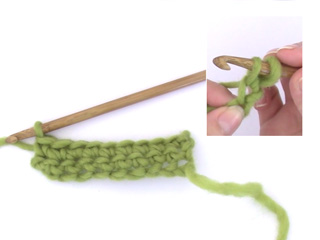
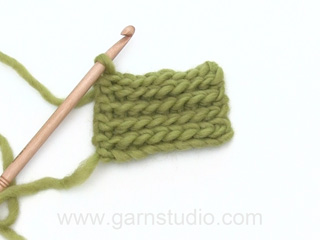

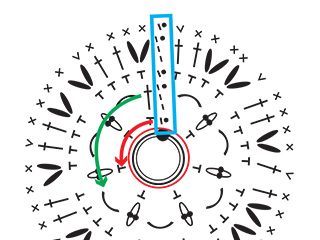



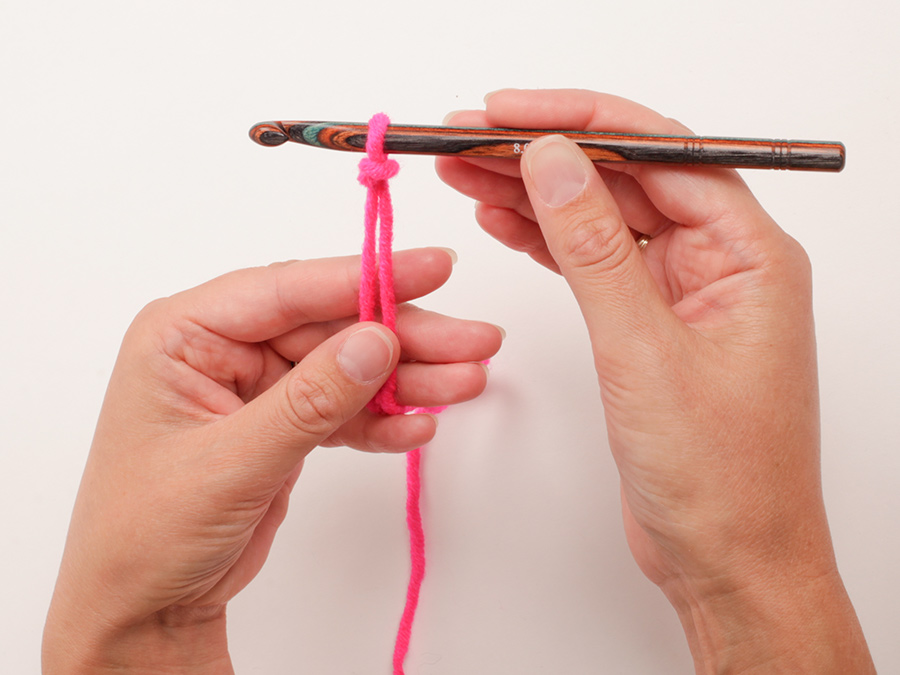
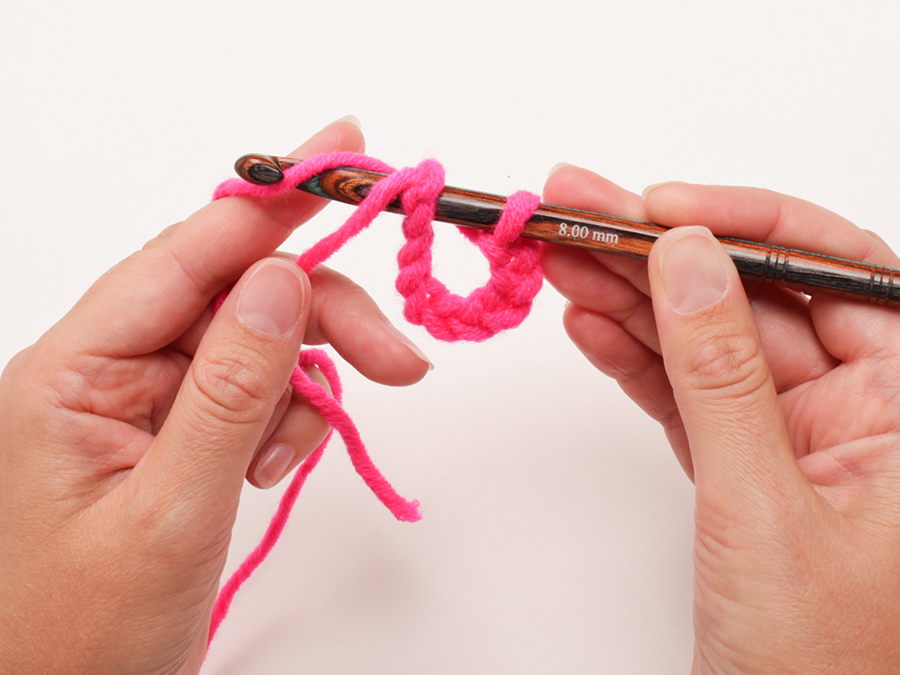
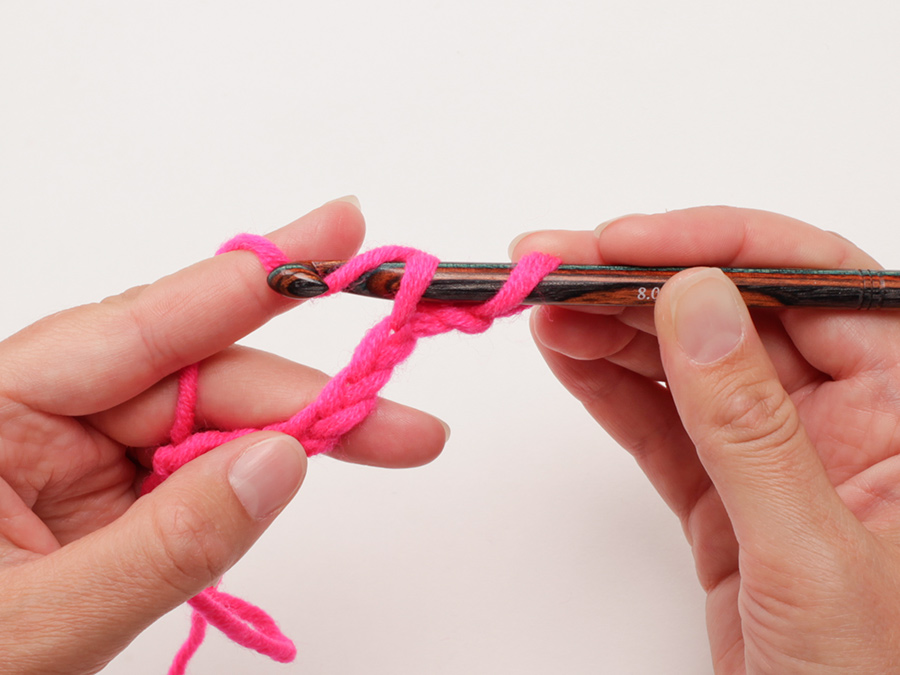
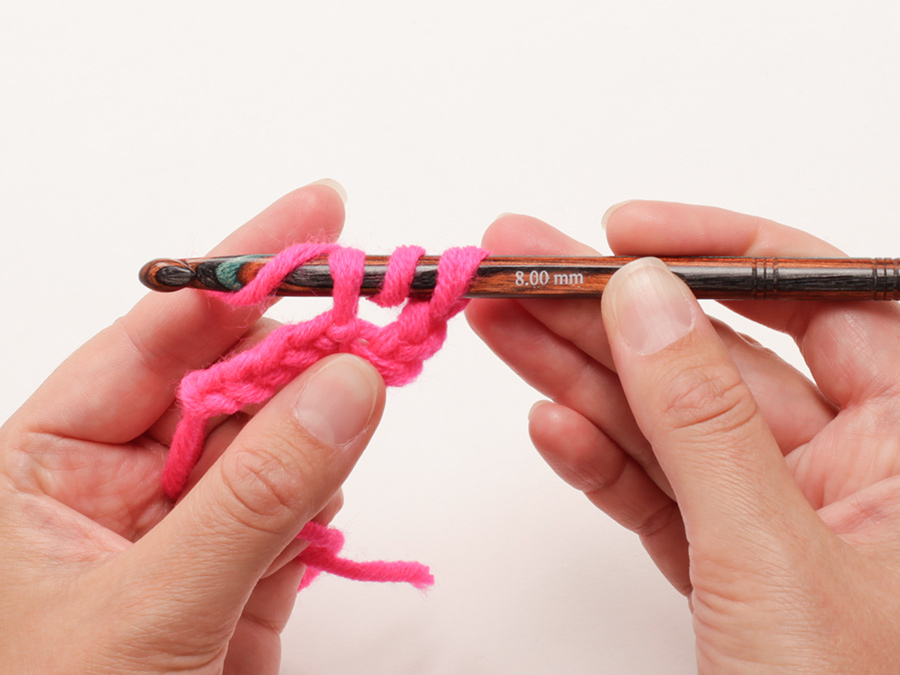







Comments / Questions (17)
Hvordan skal man forstå opskriften ? Altså i mønster a1 a2 osv ?
29.10.2024 - 15:30DROPS Design answered:
Hej Benthe, klik på lektioner øverst i opskriften, så finder du en lektion om hvordan man læser hæklediagrammer :)
30.10.2024 - 11:11In de uitleg van het telpatroon wordt alleen over een halve vaste om de losse in de stokjes groep gesproken. Er wordt nergens aangegeven dat symbool 3 een stokje betekend. Het open sterretje geeft aan dat het stokje in het stokje hieronder moet, op het telpatroon wordt aangegeven dat de toer reeds gehaakt is. Of heb ik de verkeerde uitleg bij het telpatroon. Er klopt namelijk nog meer niet.
14.10.2024 - 15:53Hello : ) Can anyone tell me what the "dashed line"/ "den stiplede linje" in the beginning of A.4 means. What kind of stitch is that?
08.08.2024 - 10:37DROPS Design answered:
Dear Anna, A.4 starts with 4 chains (3 to replace first treble crochet + 1 for chain space), reasons why there are 4 small lines. Happy crocheting!
08.08.2024 - 13:02Hei! Mistä löydän selitykset kaikille ohjeessa käytetyille symboleille? Kaikkia symboleja ei ole selitetty auki.
04.08.2024 - 19:06DROPS Design answered:
Hei, kaikki merkkien selitykset löytyvät piirroksen yläpuolelta.
06.08.2024 - 17:03Hallo, Ik heb nog 1 vraag over het haken van de mouwen. De afmetingen staan normaal gesproken van maat S naar XXXL, maar bij de mouwen lopen de afmetingen bij het in de rondte haken (hoeveel cm het moet zijn) niet op volgorde van klein naar groot. Klopt dit en is de langere afmeting inderdaad voor maat S? Of moet ik de kleinste afmeting gebruiken die in het midden van de rij staat?
10.07.2024 - 10:38DROPS Design answered:
Dag Marit,
Dat klopt, de mouwen hebben zijn in de grotere maten soms minder lang, omdat de schouders breder zijn in de grotere maten. De afmetingen vanaf de halslijn tot de manchet hebben wel oplopende afmetingen overeenkomend met de maten.
11.07.2024 - 21:14Wat wordt er bedoeld aan het einde van de mouw met: op de laatste toer haakt u 1 stokje in de steek voor de 3 lossen etc. Ik begrijp niet waar dit stokje moet komen Ook snap ik het vervolg niet, voor maat L: je haakt 13 keer A2 en in toer 1 opeens nog maar 12! Waar is die ene A2 gebleven? Alvast bedankt voor uw feedback
08.07.2024 - 17:19DROPS Design answered:
Dag Ilona,
In plaats van dat je de toer afsluit met een halve vaste in de 3e losse, haak je een stokje in de steek vlak voor die 3 lossen, zodat je als het ware 2 stokjes naast elkaar hebt (waarbij de drie lossen als 1 van die 2 stokjes geldt). Je sluit de toer dus niet. Vanaf daar haak je vervolgens heen en weer, beginnend met toer 1. Zoals ik het lees haak je in toer 1 van de mouw toch ook 13 keer A.2 voor maat L?
07.08.2024 - 10:44Wat wordt bedoelt met eindigen met een halve vaste in de 3e losse van het begin van de toer? Het ziet er vreemd uit zoals ik het interpreteer
01.07.2024 - 12:15DROPS Design answered:
Dag Marit,
Aan het begin van de toer heb je 3 lossen gehaakt (dit staat gelijk aan 1 stokje). Als helemaal in de rondte hebt gehaakt, dan sluit je de toer door 1 halve vaste te haken in de 3e losse van die 3 lossen.
01.07.2024 - 20:59Bonjour, Désolé je me suis aperçu que je n avait pas respectée les mesures après la séparations dos devant d ou un écart de 7 cm sur l 3mmenchure. Désolée.
29.04.2024 - 09:25Bonjour, Pour la taille XXL j ai tricote comme indiqué 28 cm avant la séparation devant dos. Mais après je me retrouve avec des emmanchures de 32 cm. Je ne peux coudre les manches. Ne faut il pas plutôt faire 38 cm avant la séparation ? De plus sur le dessin il est indiqué 50 mais cela aussi me semble faux ?
29.04.2024 - 07:31DROPS Design answered:
Bonjour Mme Lebrun, les 50 cm sont mesurés à partir du rang de montage du bas du pull soit 28 cm avant le début des emmanchures + 22 cm après les emmanchures = 50 cm de hauteur totale. Bon crochet!
29.04.2024 - 10:12Kloppen de lengte van de mouwen, ik begrijp niet zo goed waarom voor maat s de langste mouwlengte is, kunt u mij dat uitleggen? Alvast bedankt!
17.03.2024 - 21:28DROPS Design answered:
Dag Eygje,
Omdat de schouders voor maat S kleiner zijn, zijn de mouwen langer.
20.03.2024 - 12:28